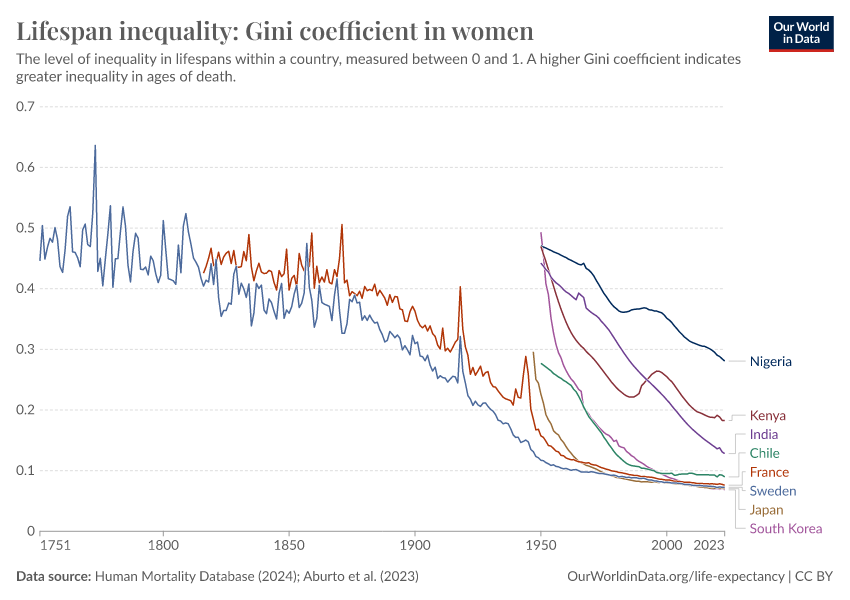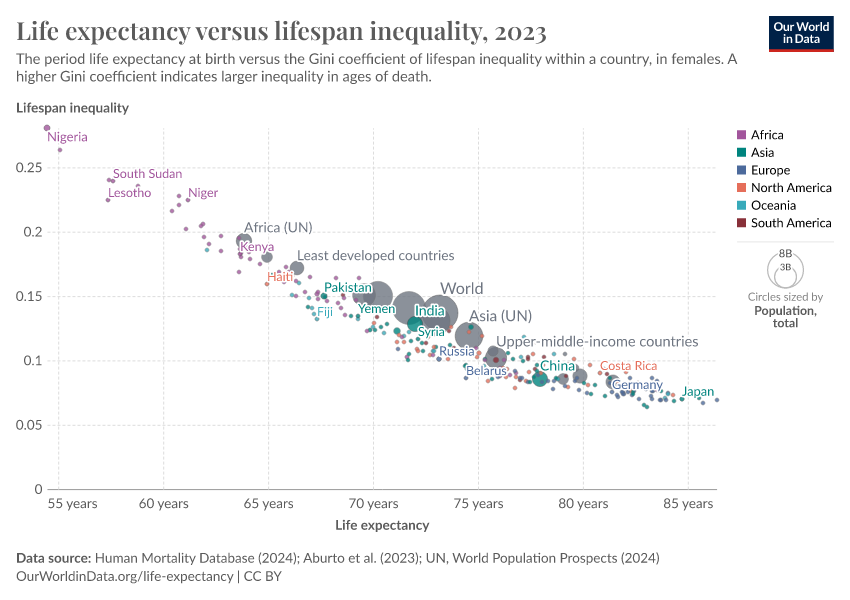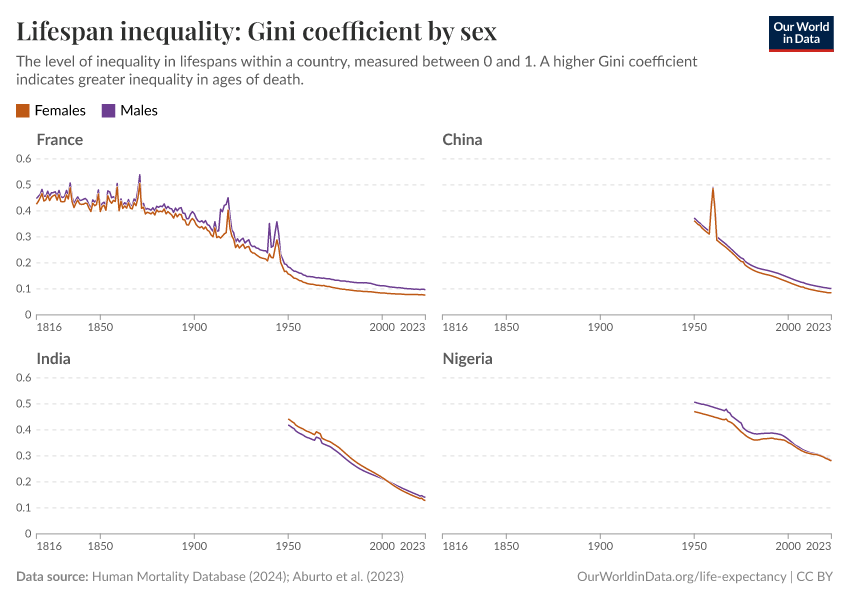Lifespan inequality: Gini coefficient in women

What you should know about this indicator
- The level of inequality in lifespans, measured between 0 and 1.
- A higher coefficient indicates greater inequality in ages of death, while a lower coefficient indicates more uniform ages of death.
Related research and writing
What you should know about this indicator
- The level of inequality in lifespans, measured between 0 and 1.
- A higher coefficient indicates greater inequality in ages of death, while a lower coefficient indicates more uniform ages of death.
Sources and processing
This data is based on the following sources
How we process data at Our World in Data
All data and visualizations on Our World in Data rely on data sourced from one or several original data providers. Preparing this original data involves several processing steps. Depending on the data, this can include standardizing country names and world region definitions, converting units, calculating derived indicators such as per capita measures, as well as adding or adapting metadata such as the name or the description given to an indicator.
At the link below you can find a detailed description of the structure of our data pipeline, including links to all the code used to prepare data across Our World in Data.
Notes on our processing step for this indicator
This was calculated using the algorithm and scripts from Aburto et al. (2020). We regenerated the Gini coefficient, rather than the inverse-log Gini coefficient.
Citation: Aburto, J. M., Villavicencio, F., Basellini, U., Kjærgaard, S., & Vaupel, J. W. (2020). Dynamics of life expectancy and life span equality. Proceedings of the National Academy of Sciences, 117(10), 5250–5259. https://doi.org/10.1073/pnas.1915884117 Code available on Zenodo: https://zenodo.org/record/3571095
Reuse this work
- All data produced by third-party providers and made available by Our World in Data are subject to the license terms from the original providers. Our work would not be possible without the data providers we rely on, so we ask you to always cite them appropriately (see below). This is crucial to allow data providers to continue doing their work, enhancing, maintaining and updating valuable data.
- All data, visualizations, and code produced by Our World in Data are completely open access under the Creative Commons BY license. You have the permission to use, distribute, and reproduce these in any medium, provided the source and authors are credited.
Citations
How to cite this page
To cite this page overall, including any descriptions, FAQs or explanations of the data authored by Our World in Data, please use the following citation:
“Data Page: Lifespan inequality: Gini coefficient in women”, part of the following publication: Saloni Dattani, Lucas Rodés-Guirao, Hannah Ritchie, Esteban Ortiz-Ospina, and Max Roser (2023) - “Life Expectancy”. Data adapted from Human Mortality Database, United Nations. Retrieved from https://archive.ourworldindata.org/20251022-222946/grapher/gini-coefficient-of-lifespan-inequality-in-females.html [online resource] (archived on October 22, 2025).How to cite this data
In-line citationIf you have limited space (e.g. in data visualizations), you can use this abbreviated in-line citation:
Human Mortality Database (2025); Aburto et al. (2023) – with major processing by Our World in DataFull citation
Human Mortality Database (2025); Aburto et al. (2023) – with major processing by Our World in Data. “Lifespan inequality: Gini coefficient in women” [dataset]. Human Mortality Database, “Human Mortality Database”; United Nations, “World Population Prospects” [original data]. Retrieved December 18, 2025 from https://archive.ourworldindata.org/20251022-222946/grapher/gini-coefficient-of-lifespan-inequality-in-females.html (archived on October 22, 2025).
